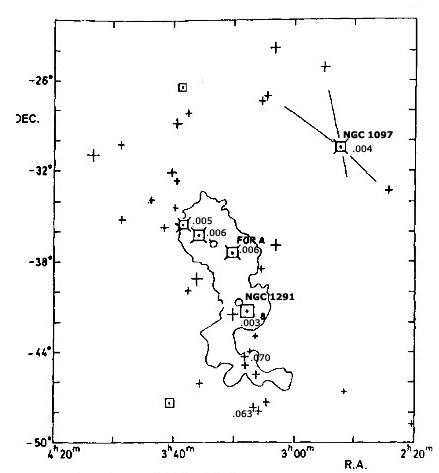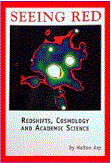
home •
about •
essential guide •
picture of the day •
thunderblogs •
news •
multimedia •
predictions •
products •
get involved •
contact

Credit: Halton Arp, Seeing Red, p. 153
pic of the day
archive
subject index
abstract
archive
Links:
Society for
Interdisciplinary
Studies
Redshifts, Cosmology and Academic Science
Author: Halton Arp, 6"x9" paperback, 314 pages, ISBN:0-9683689-0-5
A wonderful book, Seeing Red is a must read since it is both
educational and hard-hitting while being readable and entertaining. Arp
dismantles conventional astrophysics, based on redshift being
proportional to distance, by sharing his observations on quasars,
some of which are highly redshifted yet connected to low redshifted
galaxies by material bridges. Writing eye-opening material in more
than one arena, Arp takes on the corruption of good science in
academia, government and publishing after giving us great material
concerning red shift, the Big Bang, and cosmology.
Seeing Red can be ordered
via the link below.
Order Link $25.00
Nov 03, 2005
A
Bigger View of the Fornax Cluster
“This is why I feel it is so important to go as far as possible with empirical relations and conclusions. This is why it [is] so important to discard any working hypothesis if it is contradicted by the observations—even if there is no alternative hypothesis to replace it. As unpleasant as it is, one must be able to live with uncertainty. Or, as many people say, but do not believe, ‘It is never possible to prove a theory, only to disprove it.’”
Halton Arp, Seeing Red
Previously, we “saw”—in x-ray light—that the dots of galaxies, compact clusters and quasars in the Virgo Cluster were connected by a roughly s-shaped swirl of high-energy material. Jets and elongations of material from energetically disturbed galaxies pointed toward or engulfed lines of quasars and compact clusters of small galaxies. These alignments on opposite sides of galactic nuclei indicated paths of ejected material. The redshifts of the ejected objects indicated their ages.
Virgo is not the only cluster in which alignments of objects are engulfed and connected by bridges of highly excited material. On the opposite side of the sky, the Fornax Cluster is a mirror image of Virgo. In the image above, squares with dots are bright galaxies; those with x-marks at the corners are strong radio galaxies. The plus signs are compact clusters. The redshifts of several objects are printed next to them.
The outline of x-ray emission in the Virgo Cluster is mirrored and superimposed on the Fornax Cluster. The dominant galaxy in Fornax, NGC 1291, nearly coincides with the location of the dominant galaxy in Virgo, M49 (open circle). The radio-bright active galaxy to the north (up), Fornax A (For A), nearly coincides with the location of the radio-bright active galaxy M87, also known as Virgo A (second circle).
The two radio galaxies to the upper left of For A are in line with a series of knots of material in For A that are reminiscent of the knots in the jet of M87. (For A has an inner radio jet that points toward the two plus signs to the lower left.) A concentration of compact clusters beyond the radio galaxies mark the extension of a likely cone of ejection from For A.
As in the Virgo Cluster, the compact clusters, which are strong x-ray sources, trace out the s-curve “spine” of the cluster. Also as in Virgo, the radio galaxies generally have systematically higher redshifts compared to the dominant galaxy.
After discussing several of these s-curve structures, Arp concludes: “The connection between these dots of facts, which reveals the whole picture, seems to be that newly created, high redshift material is ejected in opposite directions from active galaxies. The material evolves into high redshift quasars and then into progressively lower redshift objects and finally into normal galaxies.”
[See Arp's lecture video, "Intrinsic Redshift," for more details of this new picture of the universe.] Available from Mikamar Publishing
EXECUTIVE EDITORS:
David Talbott, Wallace Thornhill
MANAGING EDITOR:
Mel Acheson
CONTRIBUTING EDITORS: Michael Armstrong, Dwardu Cardona, Ev Cochrane,
C.J. Ransom, Don Scott, Rens van der Sluijs, Ian Tresman
WEBMASTER: Michael Armstrong
Copyright 2005: thunderbolts.info
